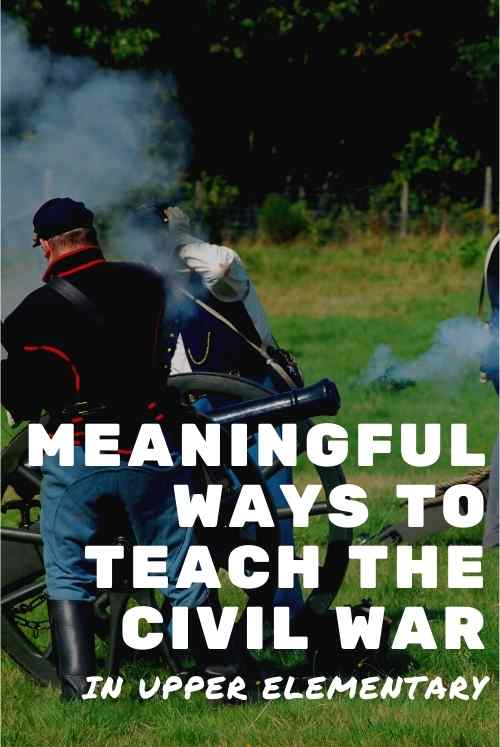
The American Civil War can be a difficult concept for our students to connect with. Meaningful lessons can help to bridge the gap. By encouraging critical thinking and presenting our students with all the information, we allow our students to think historically. This provides them with the opportunity to apply historical thinking to current events.
Use American Civil War Primary Documents
The American Civil War era is ripe with primary documents we can use in our classrooms. One of my favorites to use is President Lincoln’s letter to the young Fanny McCullough after the death of her father.
You can find the text to the letter here.
This letter invites students into the time period and has a variety of response activities that could be completed following reading it together including document or character analysis.
Don’t stop here though, there are many more letters, legislation, and other documents that can be pulled in.
Categorize Learning Through Sorts
Sorting activities are one of my favorite ways for students to demonstrate their learning. This sort of political, economic, and social impacts of the American Civil War is a great way to check for misconceptions as well as learning.
This sort can also be glued into interactive notebooks as an input activity. Then students can respond to it in a variety of ways such as writing any questions they have, an acrostic poem, or sharing their thoughts on the time period.
Take a Virtual Field Trip to an American Civil War Battlefield
It wasn’t until I visited some of the battlefields that I began to understand the immensity of the war. While we may not be able to take our students all over the country, the American Battlefield Trust has a variety of virtual tours that can be completed within the classroom.
Practice Map Skills
Map skills are one of those process standards that I believe should be practiced in every unit of study. The American Civil War has many, many maps that can be used for this purpose.
The Library of Congress has a large collection of historic as well as more modern maps that are free for classroom use. I would highly encourage you to dig around a bit and see what applies for your students.
Learn About Everyday Citizens
One of the best ways I have found to help students relate to learning about the American Civil War, and therefore make it more meaningful, is by including the study of the heroic actions of everyday people.
A great place to start is this page from the National Park Service. It will give you a jump start, and then students can research and branch out from there.
Employ the Jigsaw Method
It’s no secret that I love the Jigsaw Method. Of course, I am going to encourage you to complete a Jigsaw Method activity. This one is all about different groups of people during the American Civil War including African-Americans, women, children, and soldiers.
I believe there is no better learning experience than learning from your peers.
Refer to the Experts
It’s no secret, teaching about the American Civil War includes some tough to teach topics. Rather than shy away from them, I consult the experts and follow their lead.
Teaching Tolerance’s Teaching Hard History project has a whole section devoted to American Slavery including grade-level appropriate resources that will help you to feel more confident in giving all the information to your students in a truthful and factual way.
In Summary
Teaching the American Civil War can be tough, but by providing students with meaningful opportunities for learning we invite them to think critically and apply historical lessons to today.
Want More?
Want to press the easy button on planning? Check out these complete units, including copy and paste lesson plans, for the Civil War in Texas and U.S. History – Civil War.
